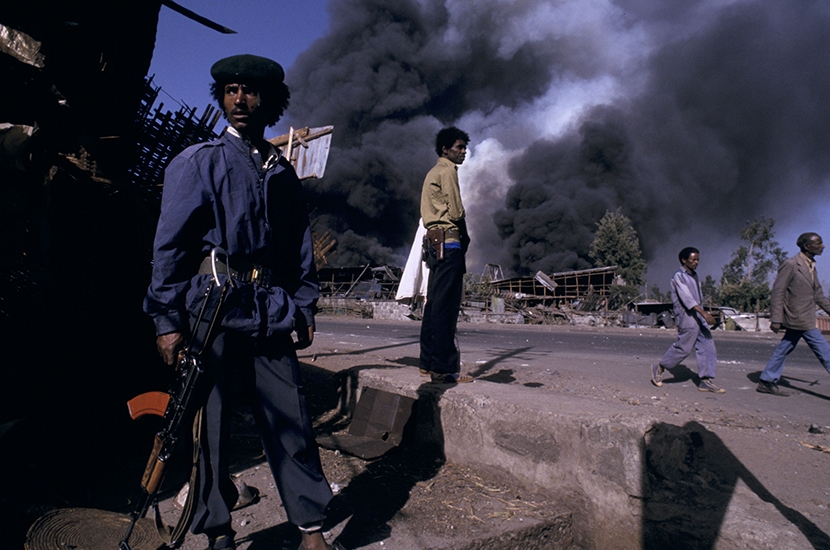Kenya
The evening before the assault on Addis Ababa, my guide Girmay and I ventured into a complex stuffed with bombs, bullets and missiles that must have been booby-trapped. A few minutes into taking photos, I heard detonations, and a bunker on the hill above us exploded. We dashed away as the rumbles and bangs behind us gathered in fury and then the earth burst in an eruption of fire, sending a mushroom cloud into the sky. As we ran, rockets and shells rained down on all sides, shrapnel and earth bursting in plumes. We took cover in a dry riverbed and I worked my way through a packet of cigarettes while the ground shook under the relentless explosions until dusk, when we raced madly across ploughed fields until we reached safety.
Fighting in the palace grounds was still going on as we made our way past a cage inhabited by a starving lion
I’m thinking about this now because it’s 30 years to the day since it happened. Girmay was a young Tigrayan rebel officer and I was a foreign correspondent. That night, together with our posse of guerrilla bodyguards, we joined a column of Russian-made rebel tanks thundering towards Addis, entering the city as dawn broke with gunfire and booms of heavy guns. When the column got held up in a traffic jam of blasting tanks I jumped down off our T-54 and asked a shopkeeper if I could use her phone. Finally, I was able to get a call through to my bureau chief, Jonathan Clayton, who was barricaded behind his Hilton hotel room door in town, but ready to take down reams of colour copy.
Rolling into the city centre with the din of battle all around, we glimpsed a crowd pulling down a giant statue of Lenin.









Comments
Join the debate for just £1 a month
Be part of the conversation with other Spectator readers by getting your first three months for £3.
UNLOCK ACCESS Just £1 a monthAlready a subscriber? Log in